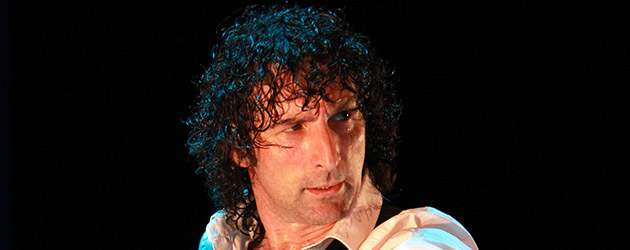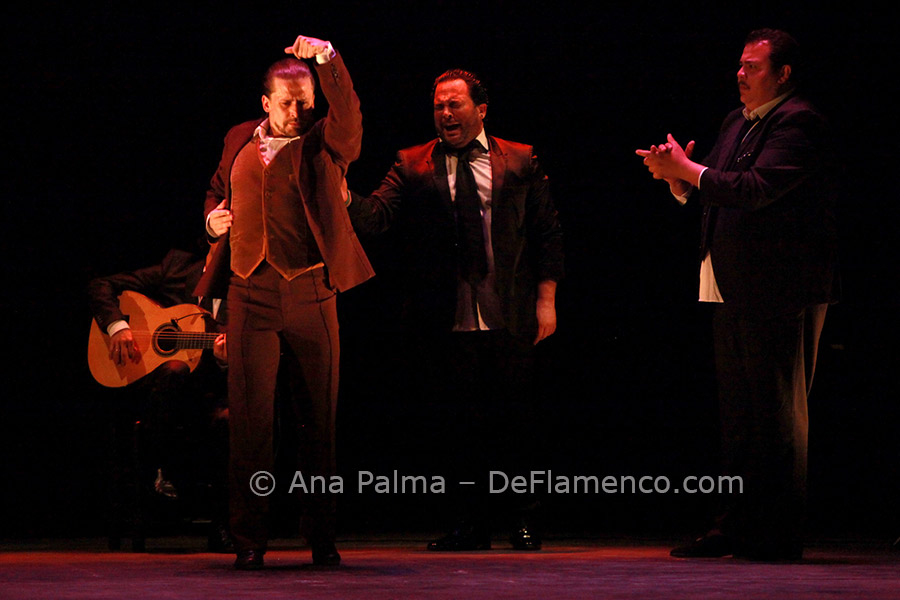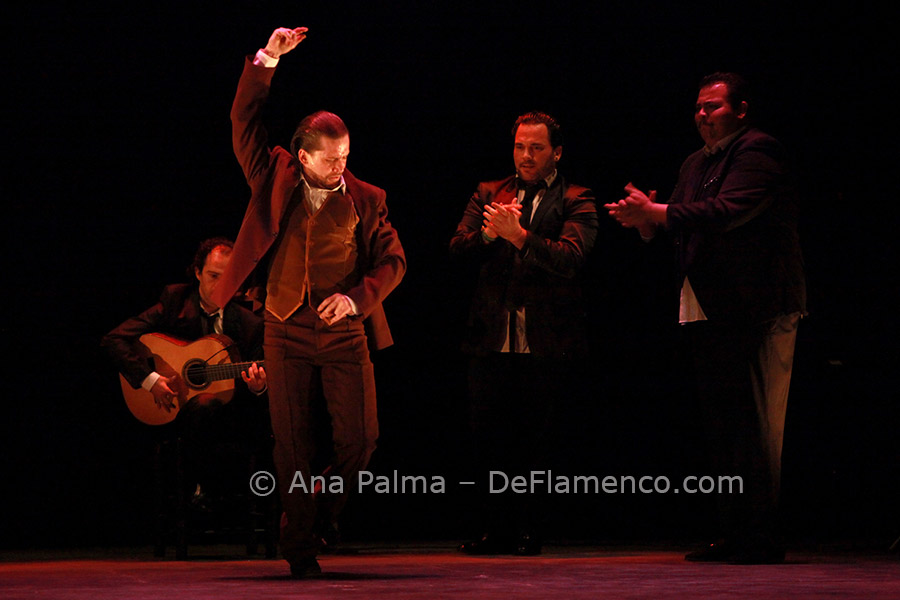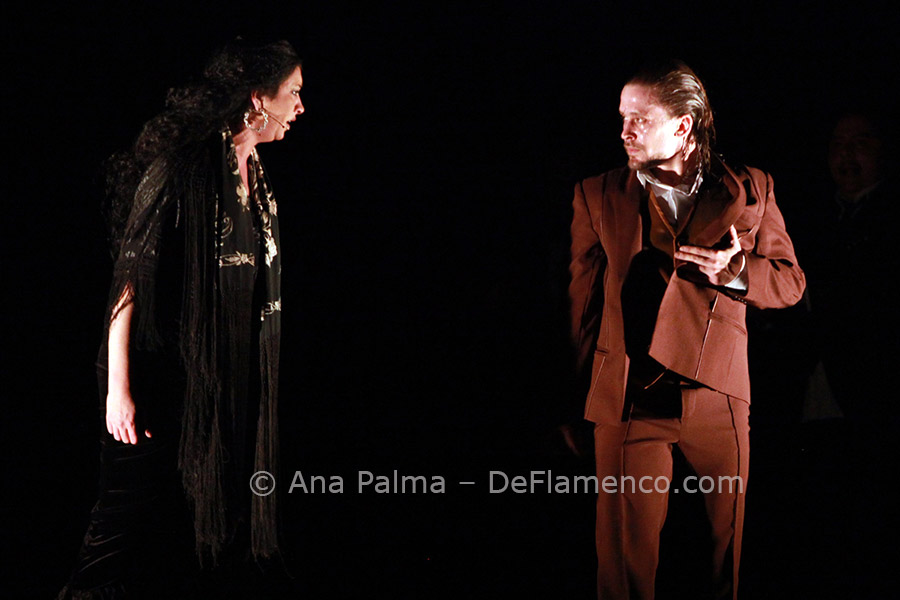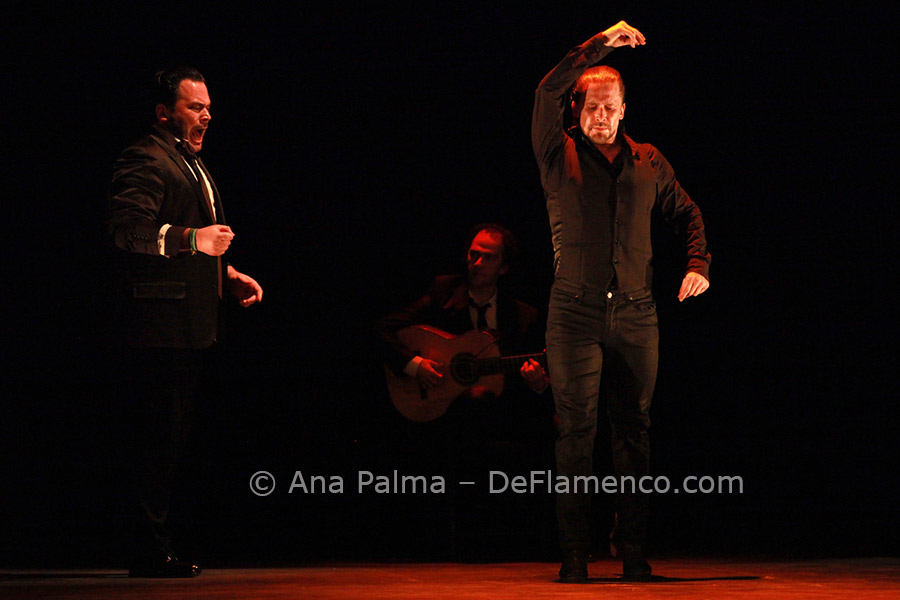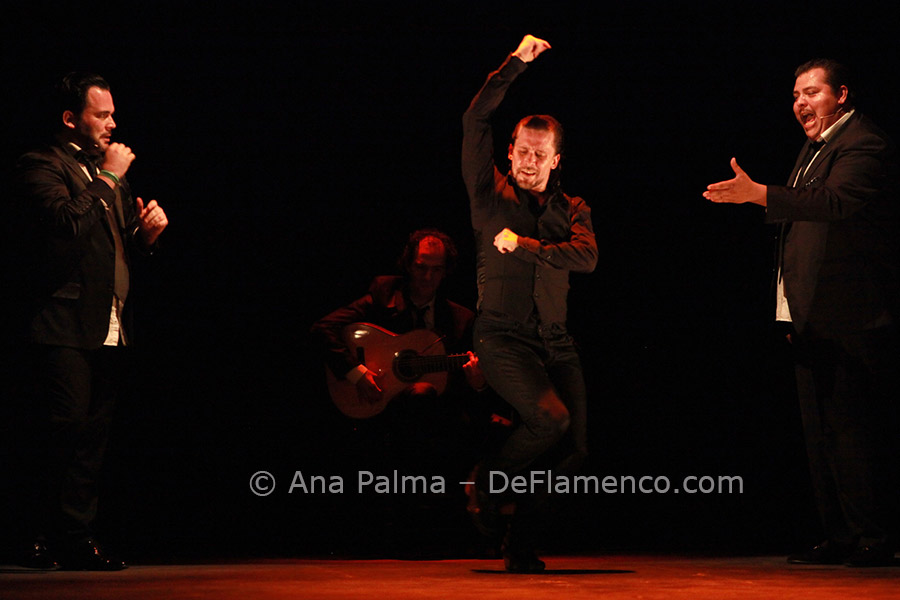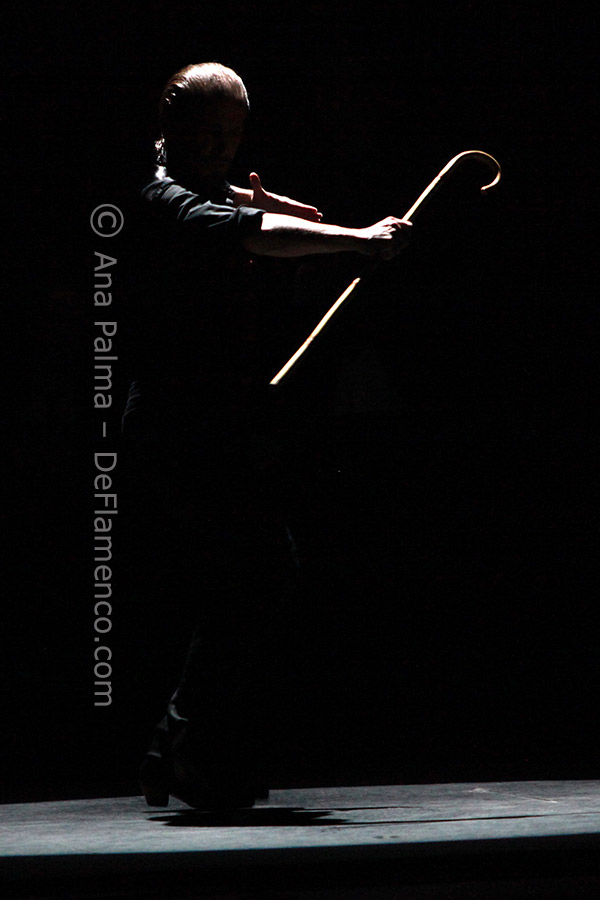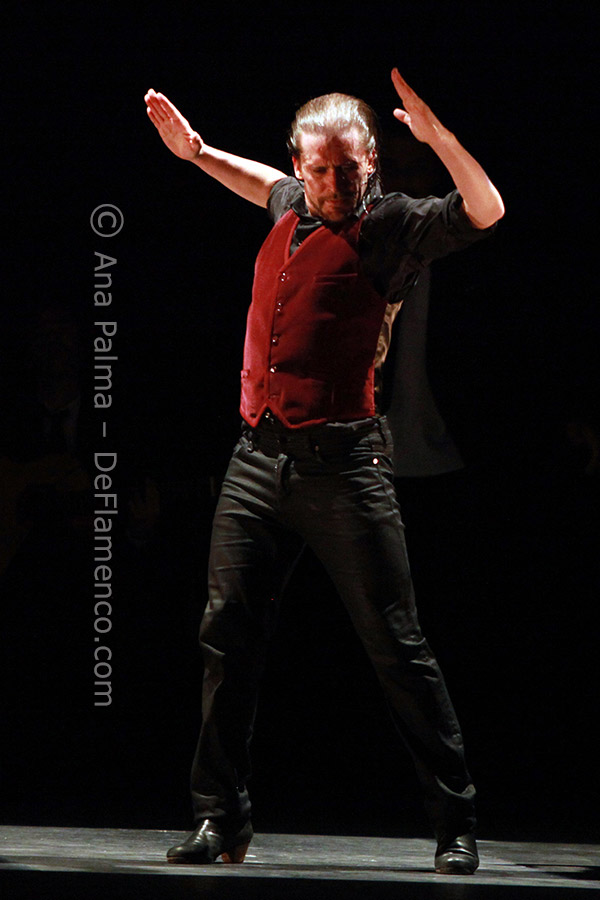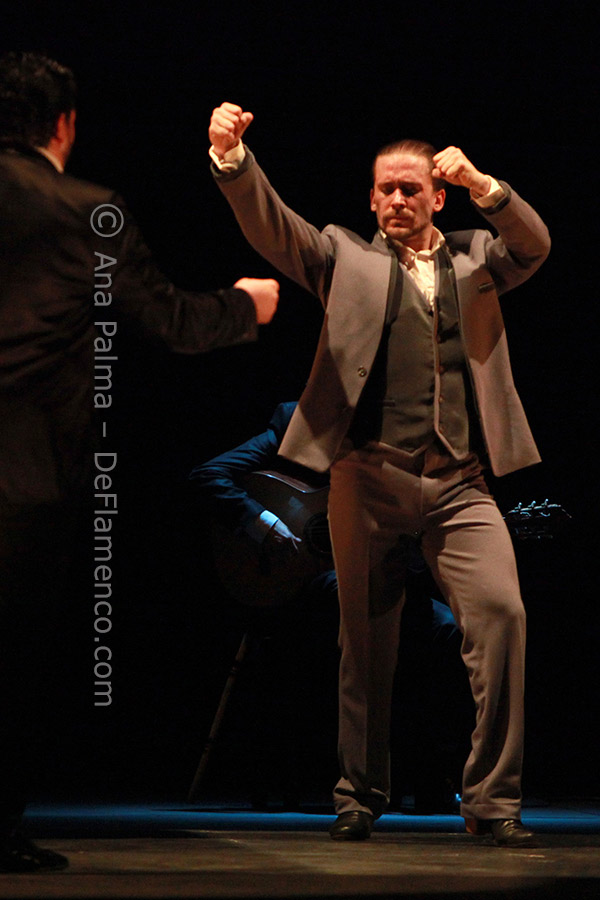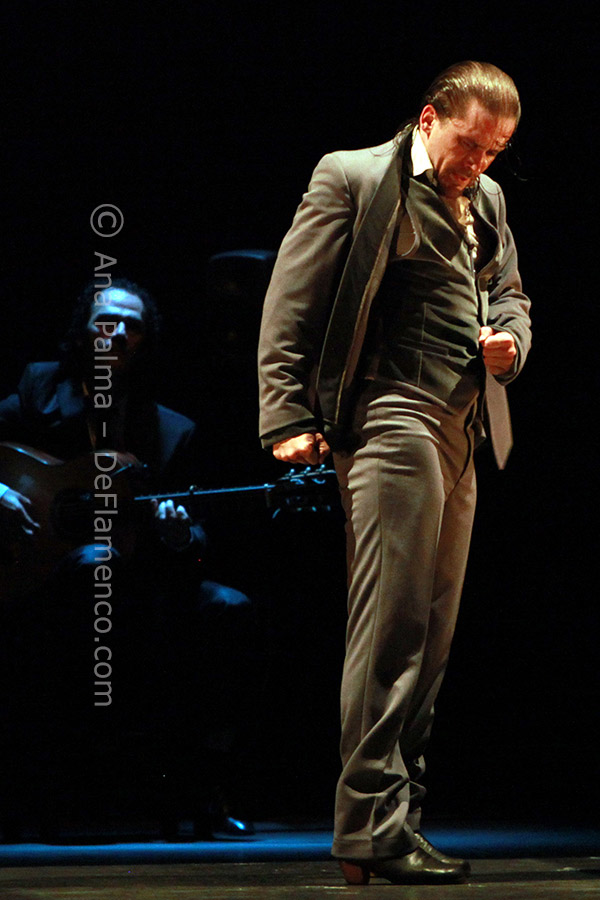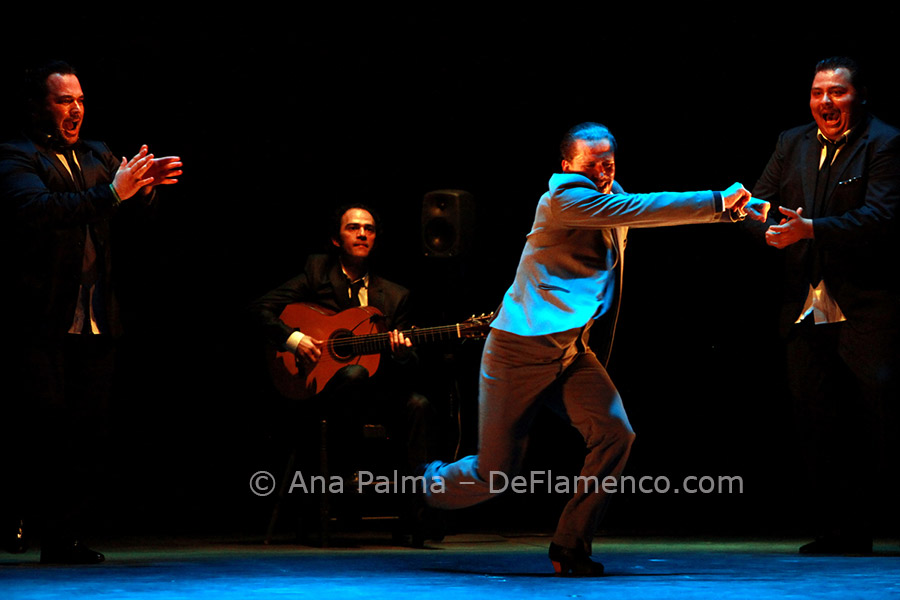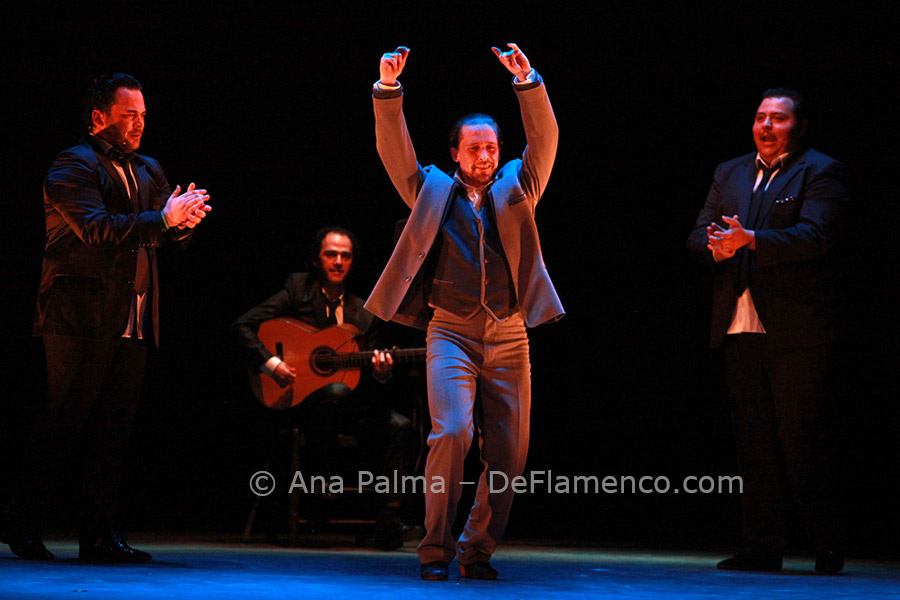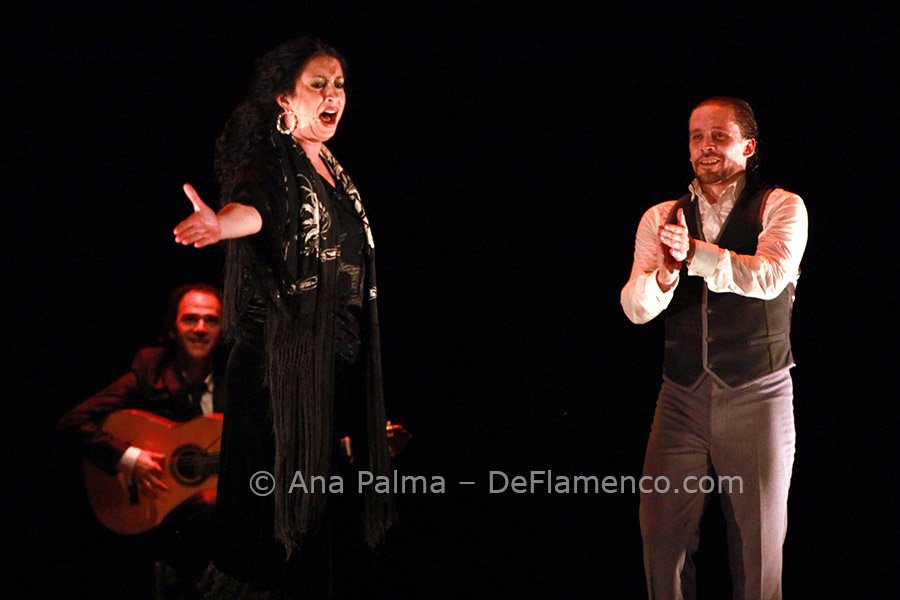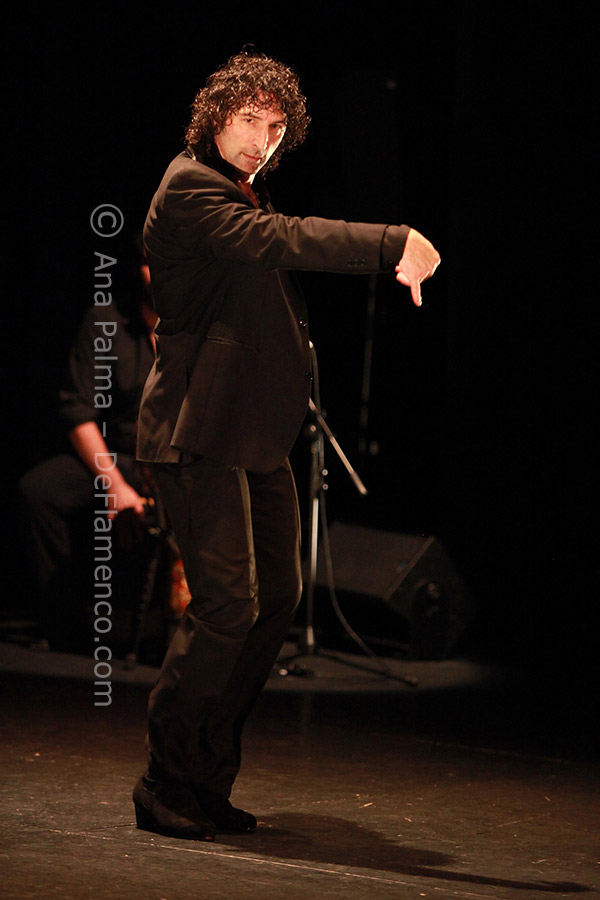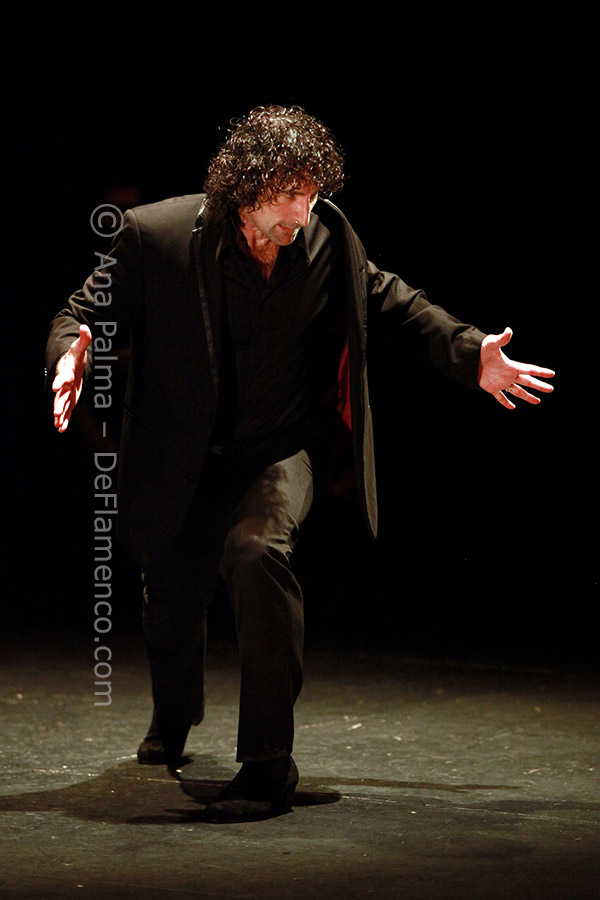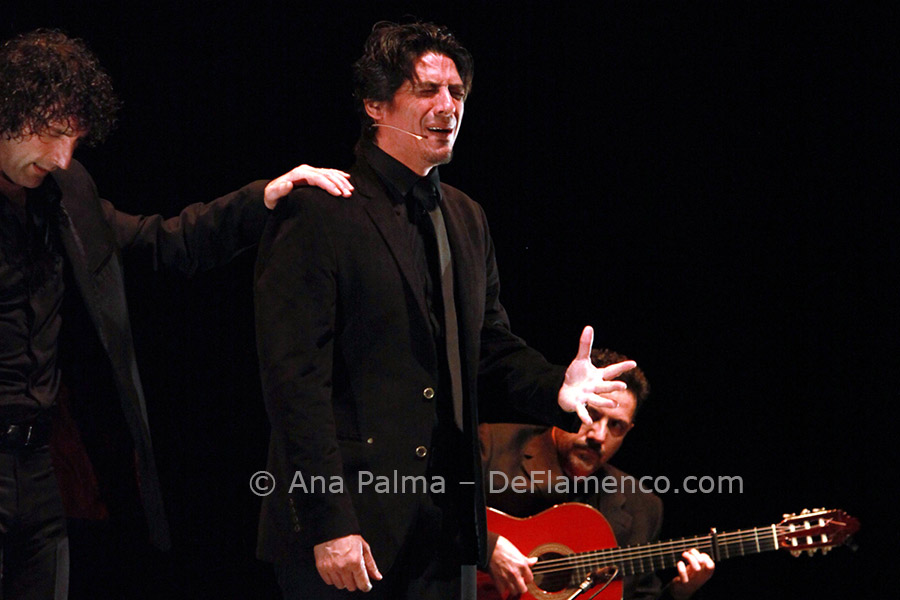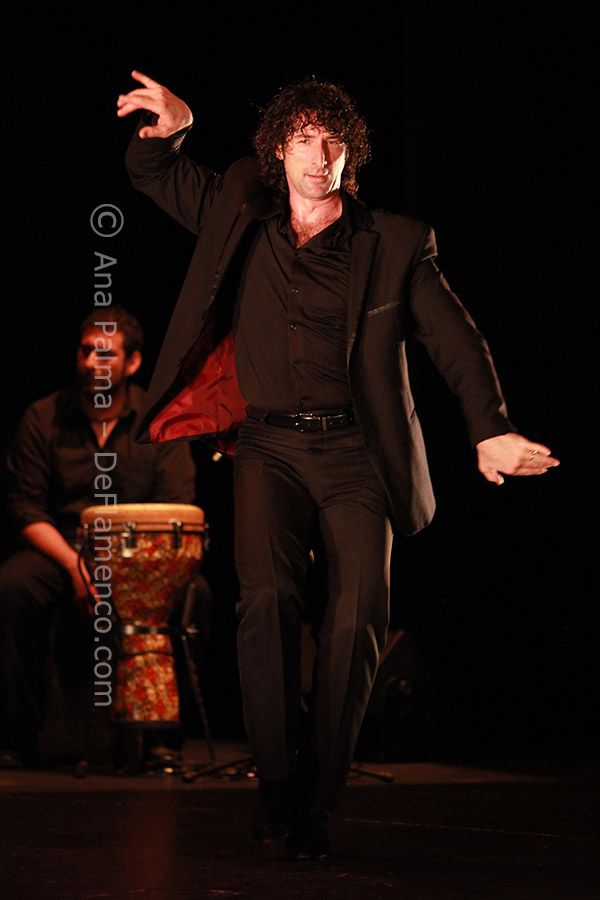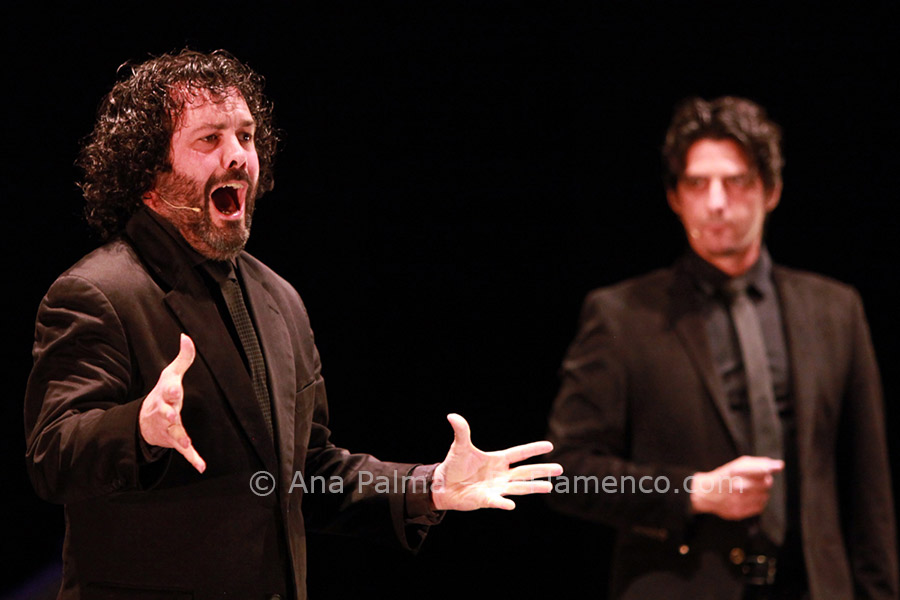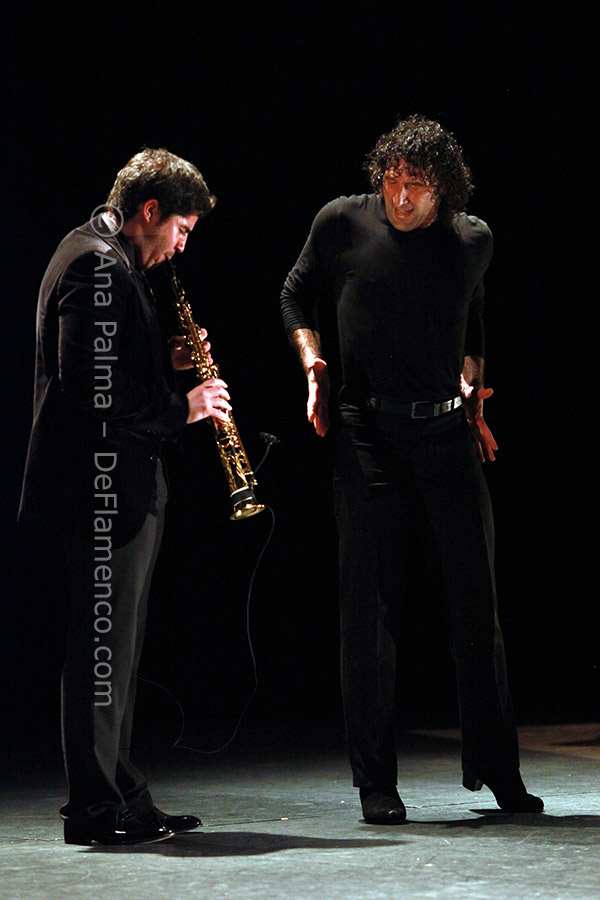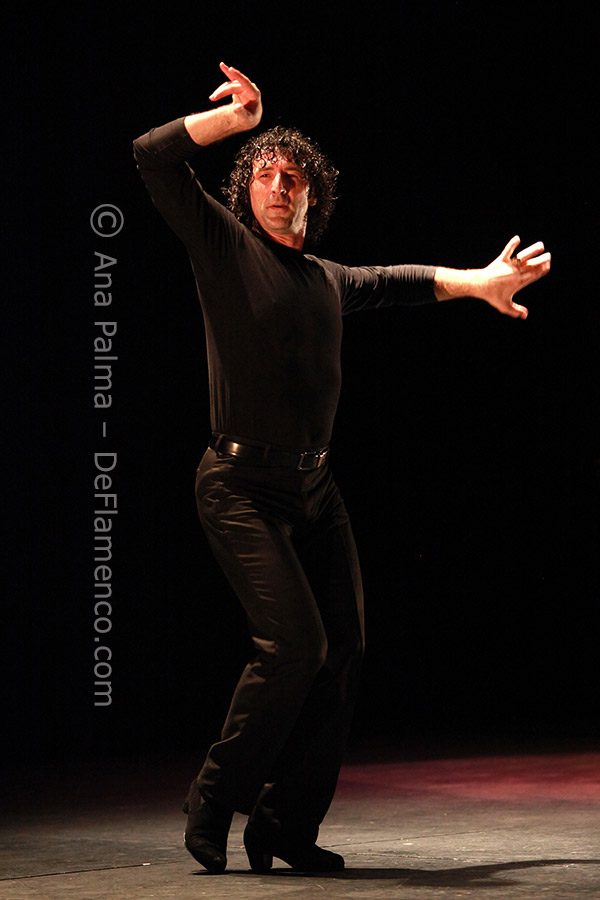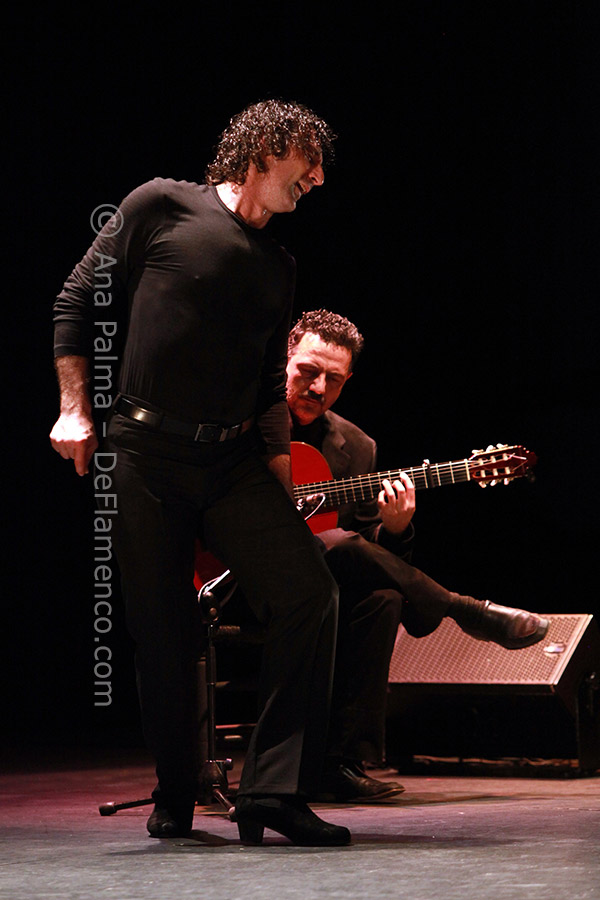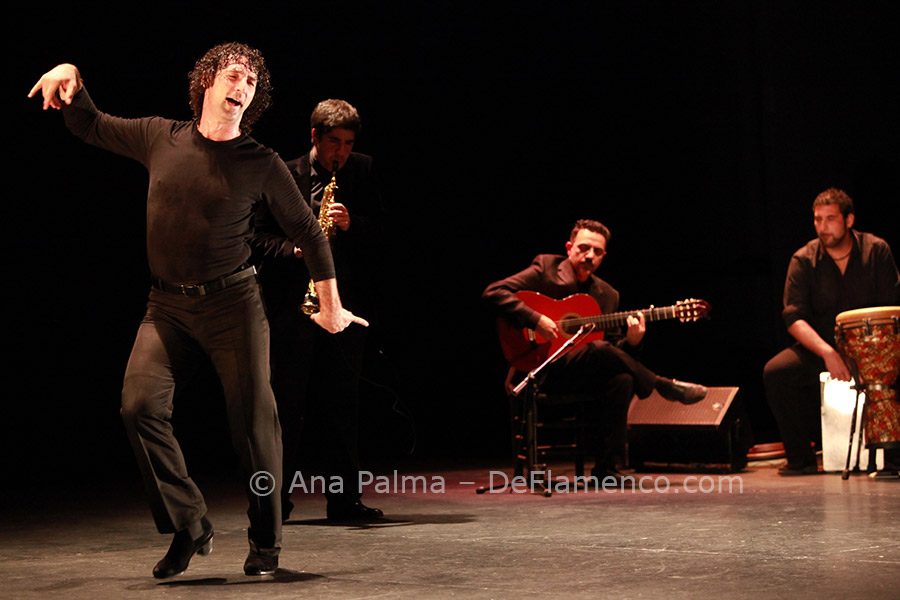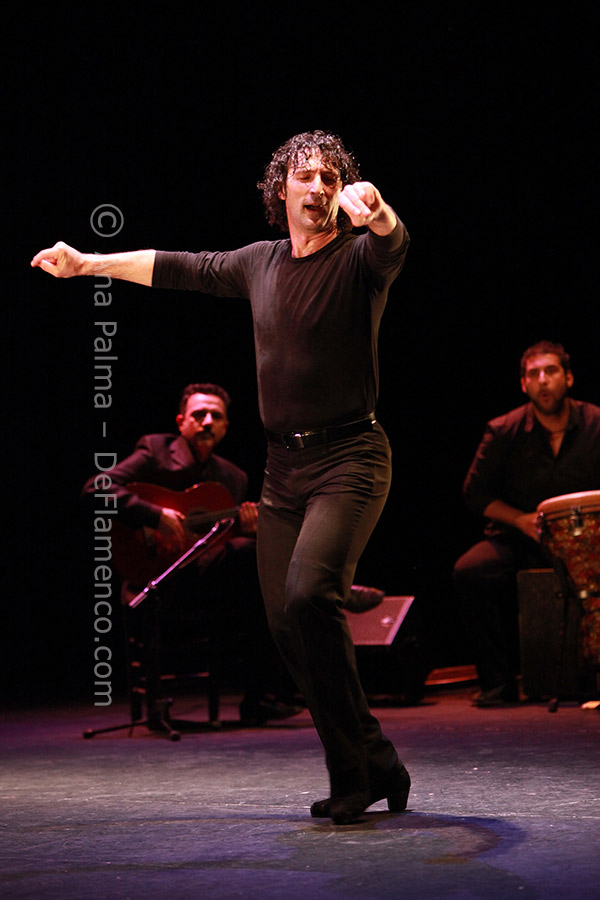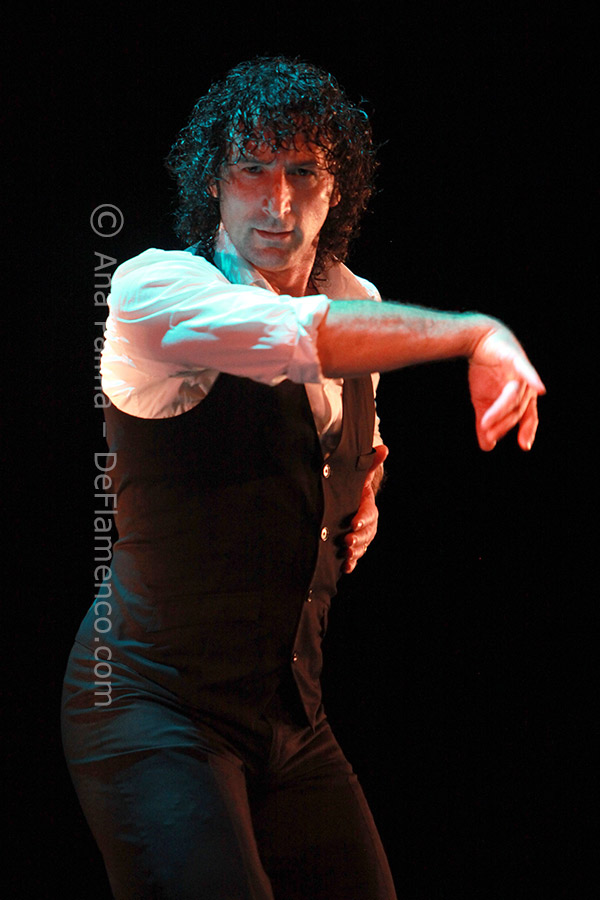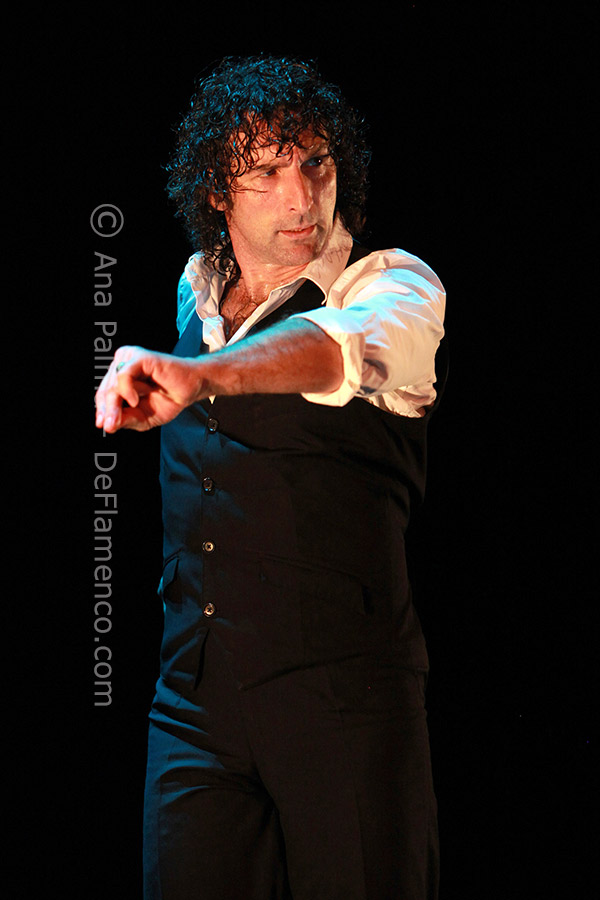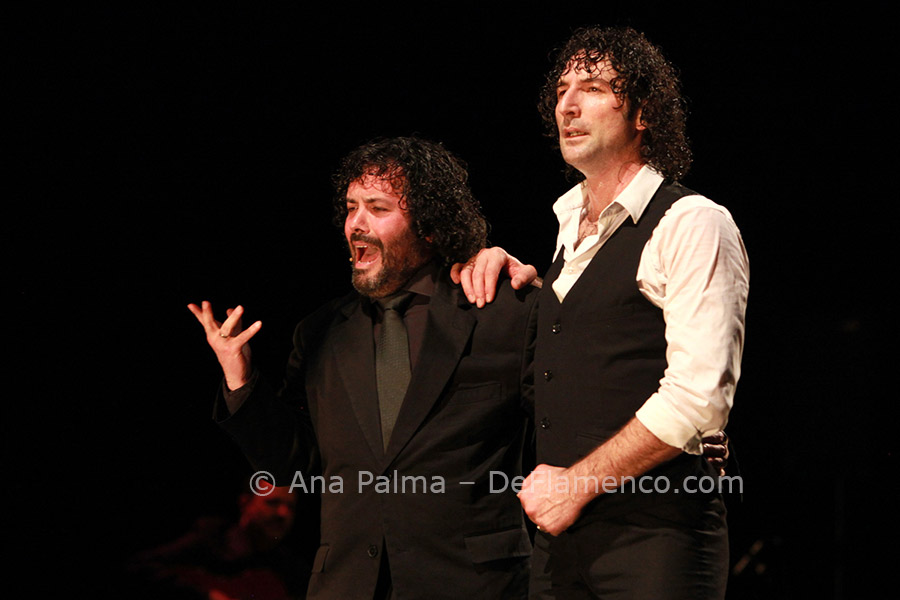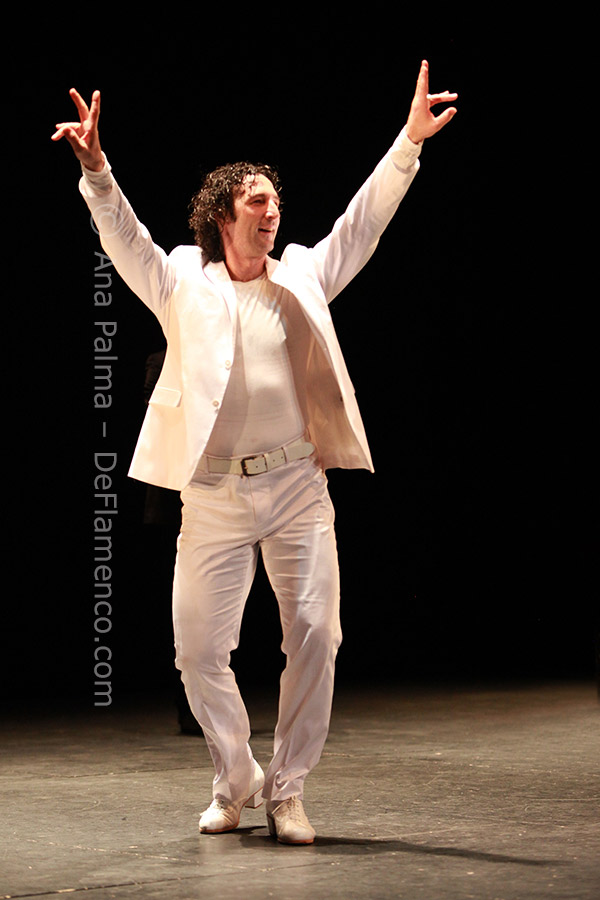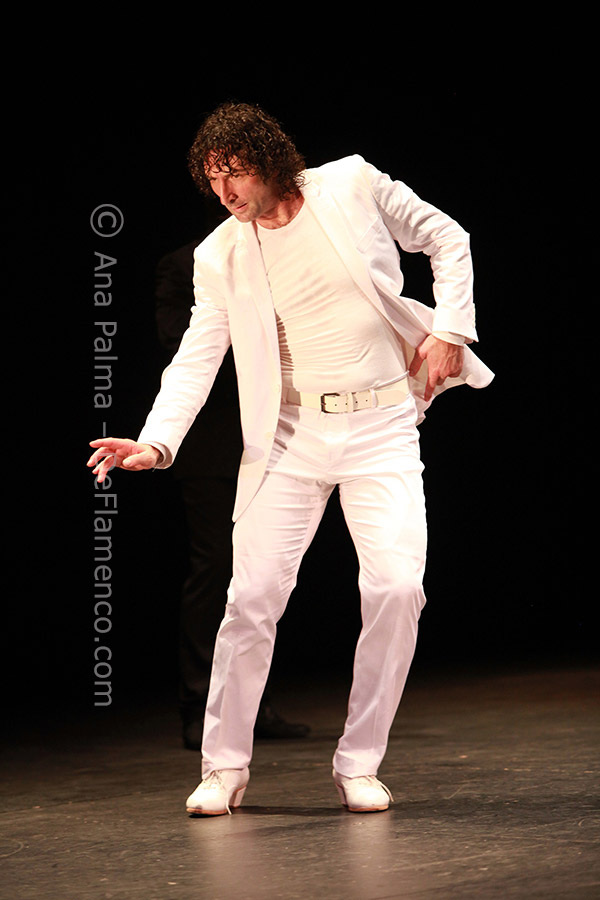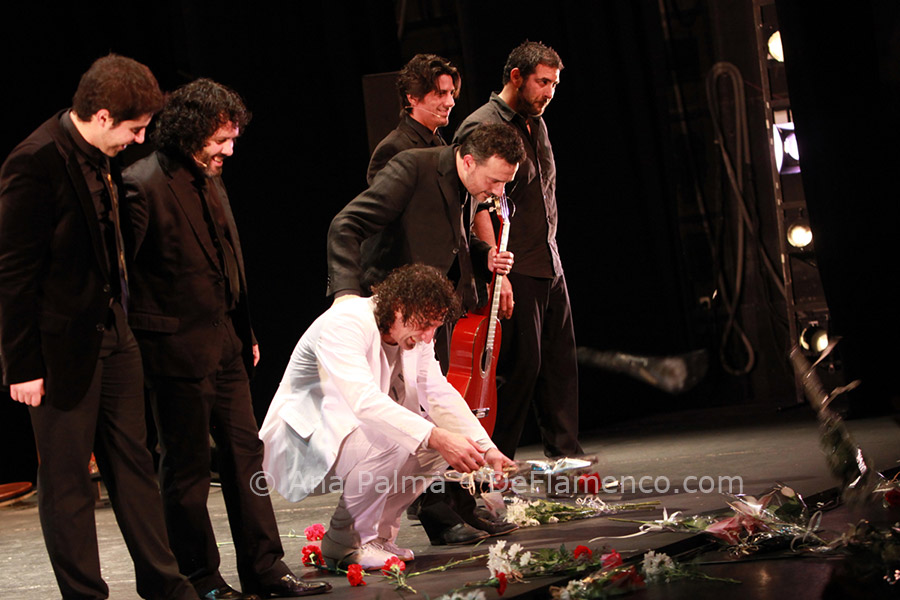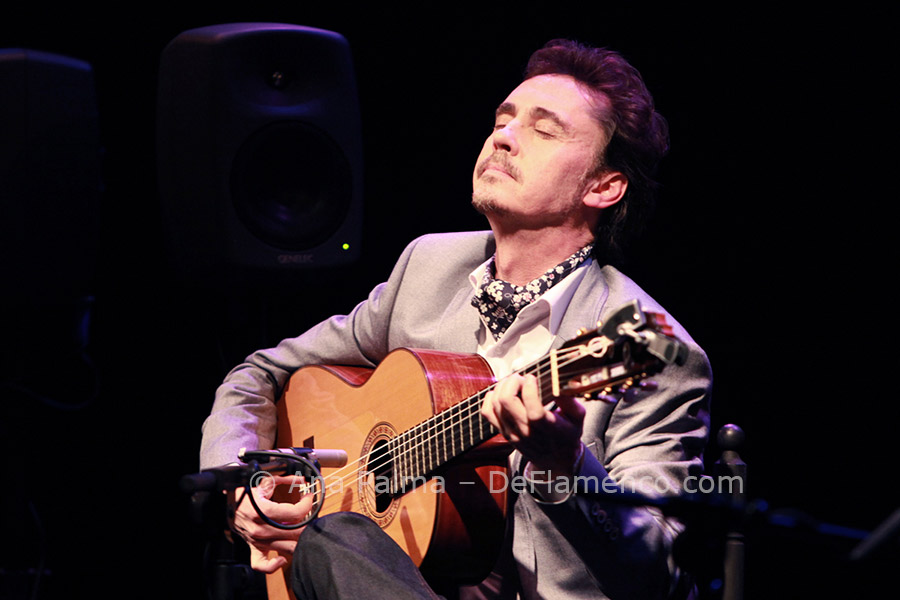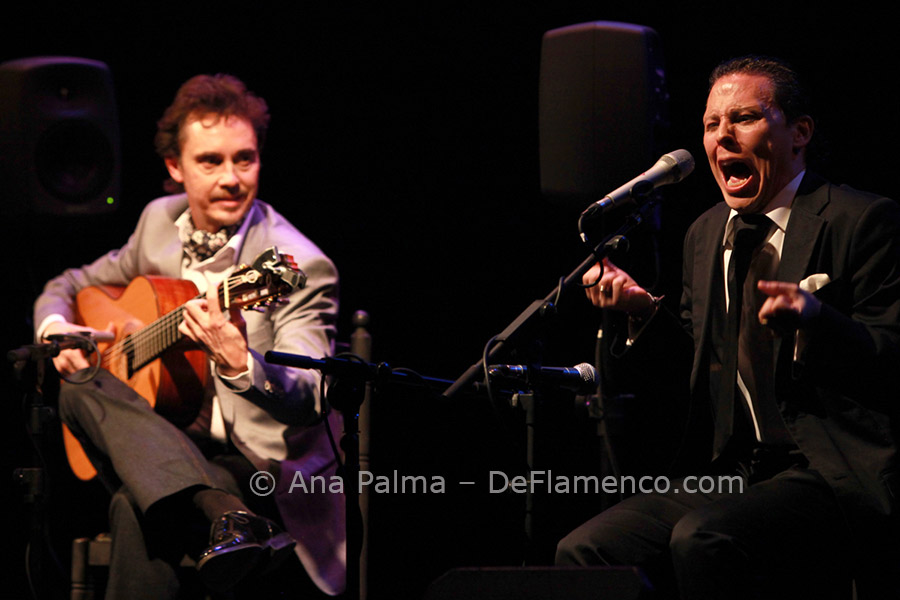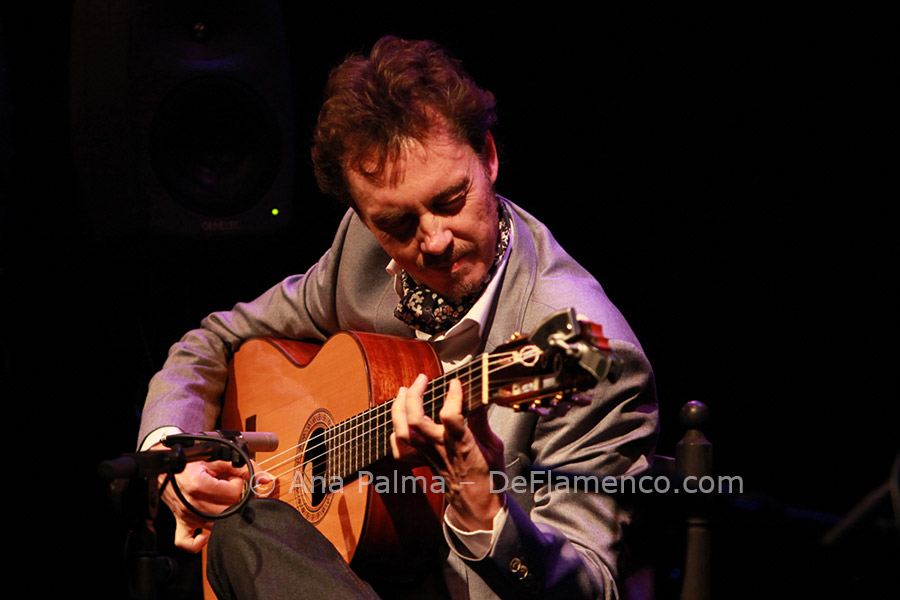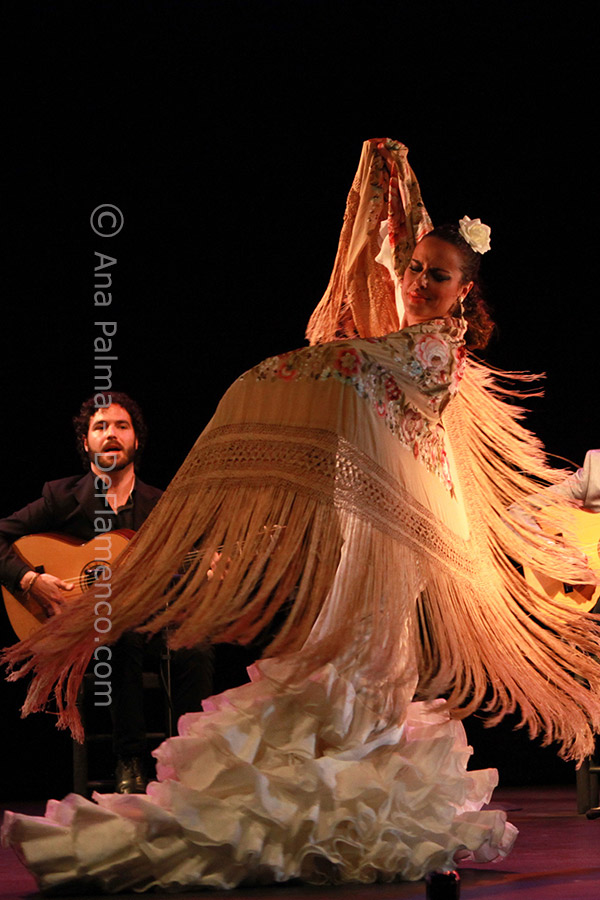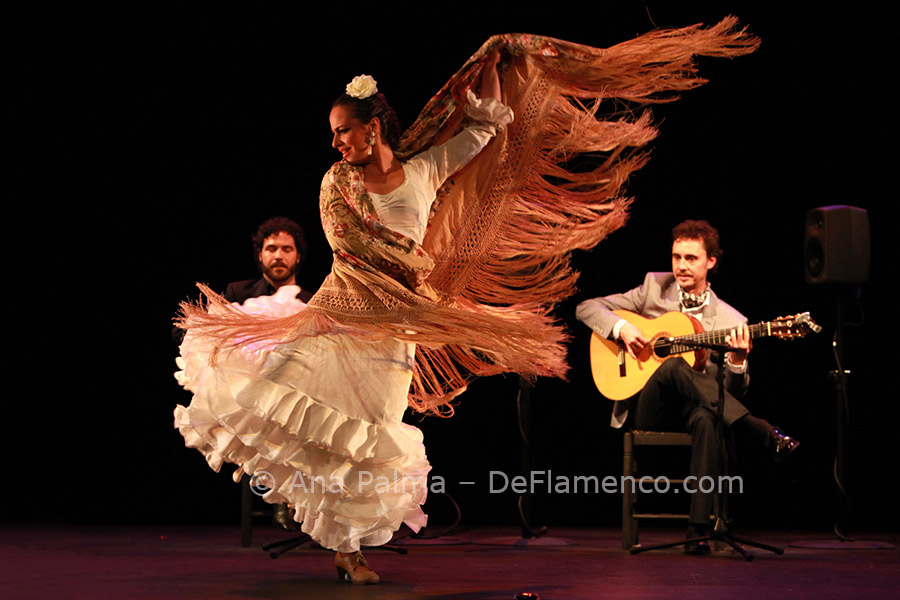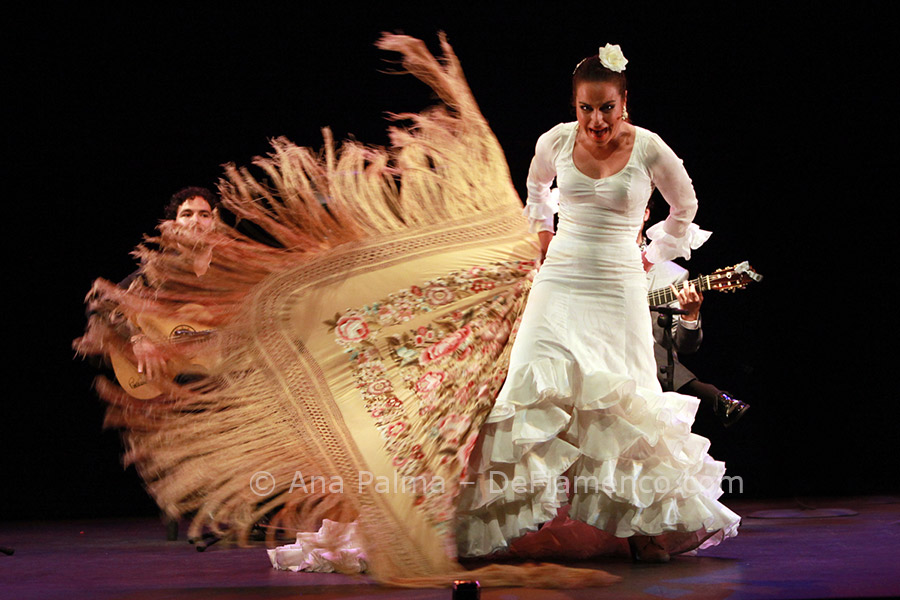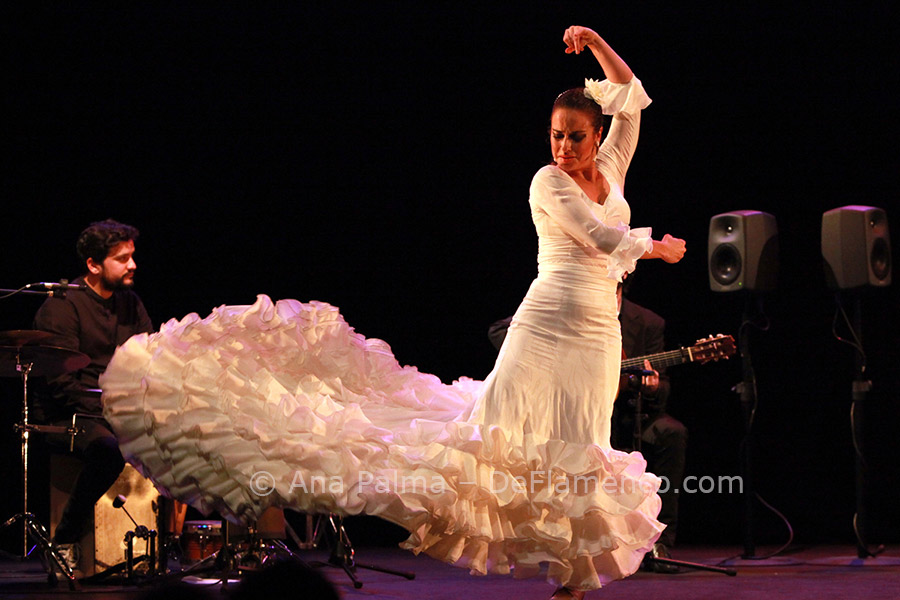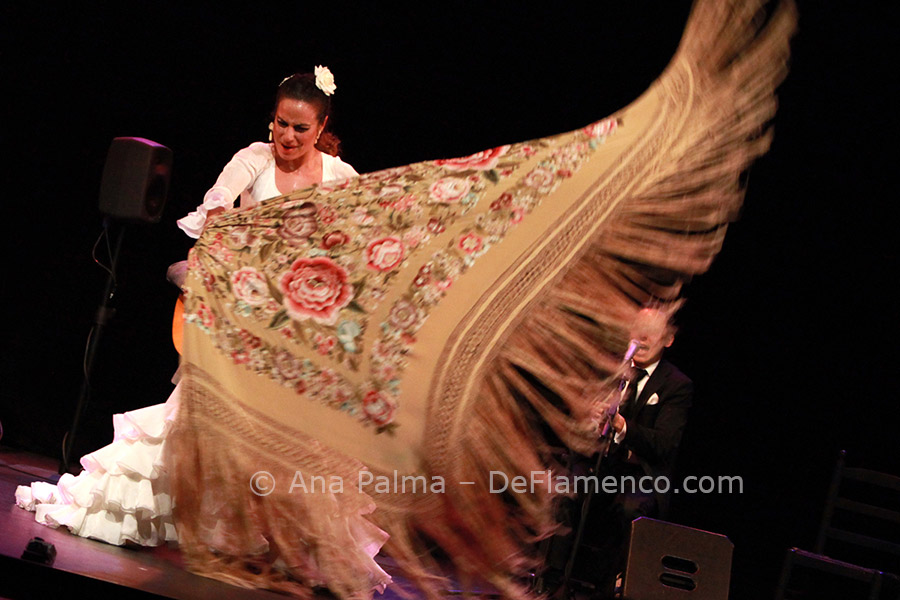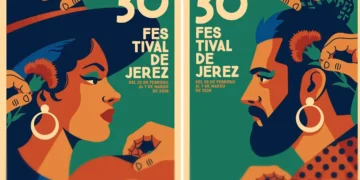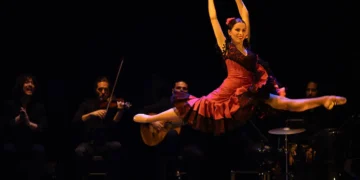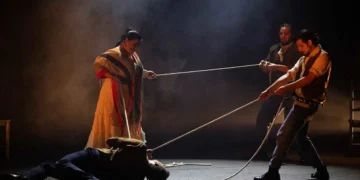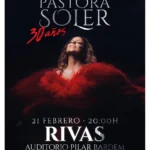Text: Estela Zatania
Photos: Ana Palma
18th FESTIVAL DE JEREZ
Ángel Muñoz, «Ángel, del blanco al negro»
Paco Serrano «Catarsis» – Alfonso Losa «Bailaores»
Friday, March 7th, 2014. Jerez de la Frontera
Special 18th Festival de Jerez – All the information
The next to last day of the Festival de Jerez offered a complete program for a variety of tastes. At seven in the evening at the Sala Paúl, Paco Serrano came to present his second recording, “Catarsis”. A major component of the rich Córdoba school of flamenco guitar, Serrano came accompanied by second guitar José Luis Medina, the voice of Juan Zarzuela, the percussion of Miguel Santiago and the delightful dancing of Marina Valiente. The musician played mineras to open, and among other pieces, serranas, rumba, soleá por bulería and alegrías for the dancer who used a bata de cola and shawl.
At twelve midnight, Madrid dancer Alfonso Losa once again danced at the Sala la Compañía, a venue at which he previously appeared in this Festival in 2009. With the voices of Fabiola Pérez, Manuel el Zambullo and Manuel Tañé, and the guitar of Román Vicenti, he did a show based on taranto, siguiriyas, farruca, soleá and bulerías.
Between one show and the other:
ÁNGEL MUÑOZ, “ÁNGEL, DEL BLANCO AL NEGRO
Teatro Villamarta, 9:00pm
Dance: Ángel Muñoz. Cante: Miguel Ortega, José Ángel Carmona. Guitar: Javier Patino. Flute, harmonica and sax: Diego Villegas. Percussion: Nacho López.
Three years ago at this same Festival, at the Sala la Compañía, we saw an earlier version of this work with the complicated original title, “Ángel. Vuelo/Baile Flamenco del Blanco al Negro”.
It has changed little since then, and the change of venue to the Teatro Villamarta is strange, because this is a relatively simple show for such a large theater. The cast is unchanged, and no problem with that. Singers Miguel Ortega (who is appearing with so many companies in this Festival, you miss him when he isn’t part of a group) and José Ángel Carmona, admirable and highly competent both of these men from Los Palacios who turn everything they touch to flamenco. Javier Patino, the sole guitarist, is also an asset.
Unlike other dancers who seek (and find) a reaction from the audience by way of virtuoso footwork, aggressive starts and stops and other spectacular gambits, Ángel Muñoz puts everything in place and effortlessly triggers ovations with his elegance and eloquent minimalism.
During the first forty-five minutes, there is a sameness which does not favor this talented dancer…pregones, martinete and siguiriya and fandandgos naturales feel like a solid piece of darkness. The taranto with the sax of Diego Villegas constructs an atmosphere as relaxed as a piano bar, and the solo of farruca only picks up at the end with Ortega’s singing. A long flute solo by Villegas is finally relieved by Carmona’s guajiras. A harmonica introduction evokes images of old sailors, and this nicely sets the mood for alegrías. Alegrías in which Muñoz comes out in gleaming white, a welcome sight after so much blackness, and dances with the freshness and vigor that is missing in the rest of the work, ending with tasty nourishing bulerías.
Twenty years ago Ángel Muñoz won an important prize at the Córdoba contest, but his name doesn’t circulate as much as others, possibly because the dancer spent years in the company of guitarist Paco Peña who mostly performs outside of Spain. With just the alegrías he danced last night, Muñoz has shown that he deserves more attention.
Afterwards, we went to the Luis de la Pica peña where Anabel Valencia, el Nono de Jero and the house dance group performed, with plenty of spontaneous singing and dancing afterwards in the patio.
Ángel Muñoz
Alfonso Losa – Bailaores
Ángel Muñoz
Descubre más desde Revista DeFlamenco.com
Suscríbete y recibe las últimas entradas en tu correo electrónico.


